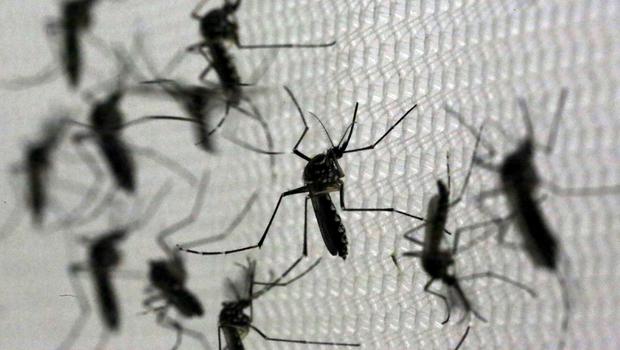A recent article in The Washington Post brought to light the deficiencies of microcephaly reporting in Brazil. According to the Health Ministry of Brazil, there were 5,600 cases of suspected microcephaly since October of 2015, a rise from 150 cases per year. However. many healthcare experts call this statistic into question citing the poor record-keeping system in Brazil. So what is really behind the microcephaly outbreak in Brazil?
Although the link between microcephaly and Zika virus is not yet firmly established researchers feel that most recent cases of microcephaly are related to Zika. Brazil’s Health Ministry reported that the number of suspected cases related to the virus has now reached 4,976 as of March 10, 2016.
A confounding factor to the rise of microcephaly cases is that fact that the government made it a reportable disease only after the Zika virus started spreading. There are no real numbers as to the number of cases prior to Zika and many researchers feel that microcephaly was very much under-reported. Thus, the current rise in cases may be due to skewed data. The problem now seems to be over-reporting as only slightly more than 400 cases of microcephaly have been confirmed out of the thousands suspected.
In fact, some researchers claim the outbreak of Brazilian microcephaly predates Zika. Some feel that the rise in cases goes back to 2012. two years before the arrival of Zika in that country.
One important fact that most media sources seem to leave out is the problem of alcohol consumption in Brazil. One study showed that about 30% of women drank heavily during their pregnancies. Fetal alcohol syndrome is another major cause of microcephaly. Given the health system in Brazil, most of these children are only identified later in life when they show up at homes for the disabled. In a 2015 study, it was found that 17% of children in Brazilian orphanages suffered fetal alcohol syndrome. In addition to alcohol consumption, there are other known causes for microcephaly in Brazil.
What are causes of microcephaly in Brazil?
– Fetal Alcohol Syndrome
– Malnutrition
– Toxoplasmosis
– Cytomegalovirus
– Untreated Phenylketonuria
– Zika?
Unfortunately, because of the poor records and reporting systems, there is no way to know what was the true prevalence of microcephaly prior to the time the government mandated reporting microcephaly cases. And this only came out after Brazil was well into the Zika outbreak.
This brings to light several problems occurring in the healthcare system in Brazil:
– We do not know how many cases of microcephaly existed in Brazil until the reporting mandate was issued after the outbreak of Zika. It is clear, that earlier numbers are grossly under-reported.
– In contrast, suspected cases now seem to be over-estimated as only a small percentage end up confirmed. Many factors can go into this but perhaps is just the heightened awareness and the fact that different people measure head circumferences in different ways. It is not a hard set measurement like weight but rather subject to observer bias.
– Women in Brazil receive poor preconception and prenatal education and counseling.
– Services following delivery of affected babies is inadequate. These children do not receive any medical care until years later when it is apparent that they are “disabled”.
– There is a huge alcohol problem in Brazil and it is causing birth defects and fetal alcohol syndrome because pregnant women keep drinking. There are varying reports as to the exact numbers, but it seems to range above 10% to over 30% of Brazilian women who drink heavily while pregnant. These women need more education PRIOR to getting pregnant.
There is a concerning trend of microcephaly in Brazil. Yet, we do not know the exact extent of the increase. We do know that there are confounding variables taking place in Brazil and several causes of microcephaly exist. We do not know how many are truly occurring because of the Zika virus outbreak. Additionally, we still do not know the exact connection between microcephaly and Zika virus. But, it is obvious that there is one and scientists are rapidly trying to understand it. That link is the tip of the iceberg of microcephaly in Brazil. We clearly need more answers.
 Copyright secured by Digiprove © 2016 Linda Girgis, MD, FAAFP
Copyright secured by Digiprove © 2016 Linda Girgis, MD, FAAFP



Congenital toxoplasmosis may result in over 1,000 cases of microcephaly each year in Brazil. Congenital CMV adds another 1,700 to 2,500.
The Brazilians have investigated 51 percent of the 7,343 reported cases of microcephaly since Oct. 2015. Two-thirds of those reports have been discarded. 1,271 infants, as of April 30, have been confirmed to have microcephaly. The Brazilian Ministry of Health notes that these cases may result from a variety of infections and not just Zika, alone. They continue to maintain, however, without evidence, that all the mothers contracted a Zika viral illness.
The estimated incidence of microcephaly in Brazil pre-Zika is about 9 per 10,000 births. That equates to a minimum of 51 microcephaly cases per week, or 1,482 over the last 29 weeks. The total number of cases confirmed by the authorities appears to fall into the range that would be normal, pre-Zika.
One of the unusual factors in this “outbreak” that you don’t mention is the geography. 77 percent of all reports originate in the NE region, and half of all reports come from just three states. Those three states have 14 percent of the national population and report 52 percent of the cases? Epidemics don’t behave this way.
Thanks for this information. It is very helpful!
Great article Dr. Linda, I think if more people know the risks might have more than one cause, they’ll have more perspective in the U.S. if Zika becomes a local vector.